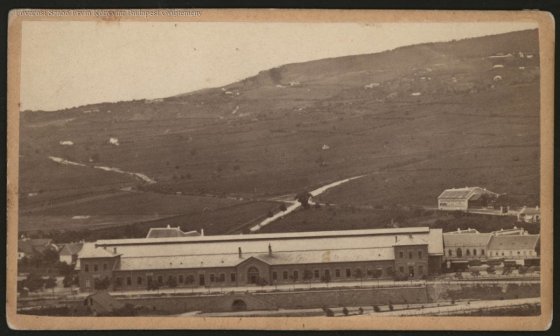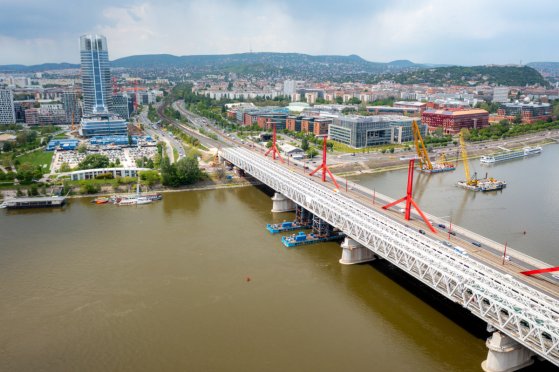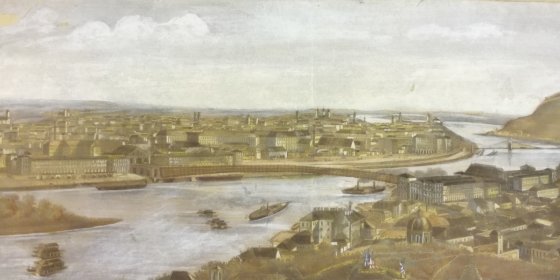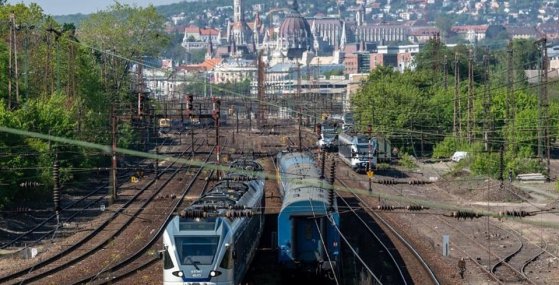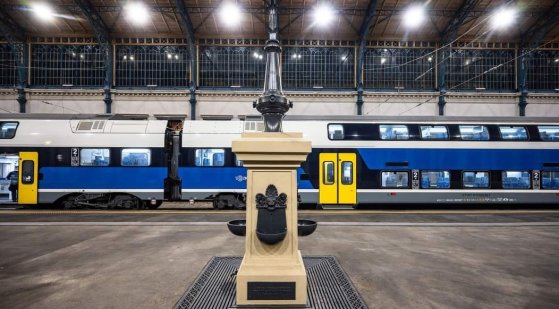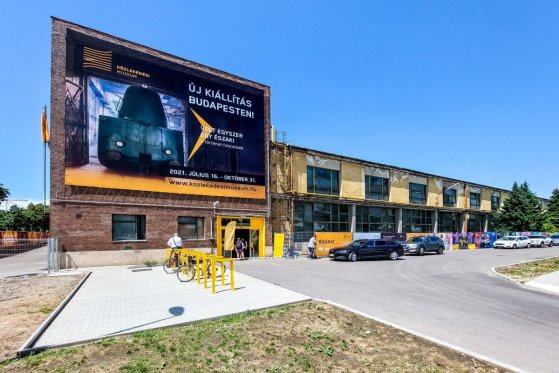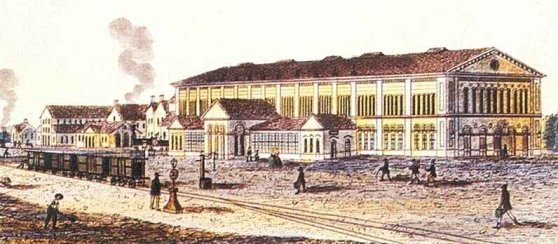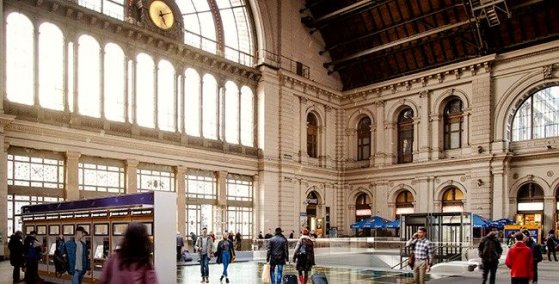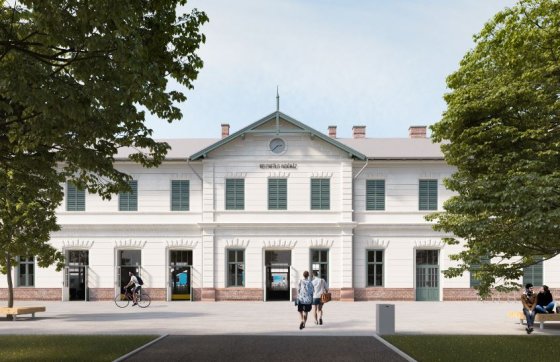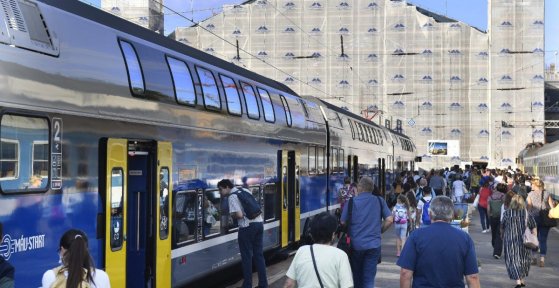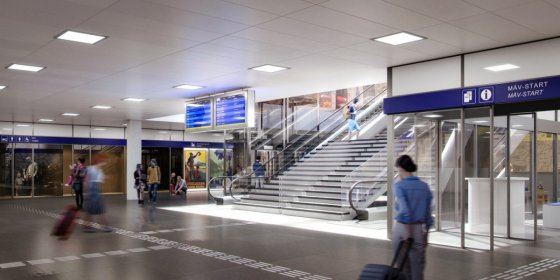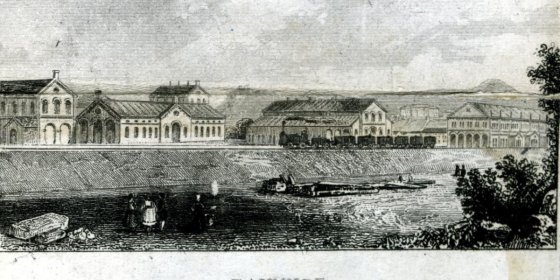 The „intertwined history” of the bridges and the city of Budapest
Which ideas and events have shaped the fate of bridges of Budapest and the cityscape? Alongside many other interesting facts, this question is also answered this newly published book by the Budapest City Archives, which introduces the history of bridges in Budapest.
The „intertwined history” of the bridges and the city of Budapest
Which ideas and events have shaped the fate of bridges of Budapest and the cityscape? Alongside many other interesting facts, this question is also answered this newly published book by the Budapest City Archives, which introduces the history of bridges in Budapest.
railway
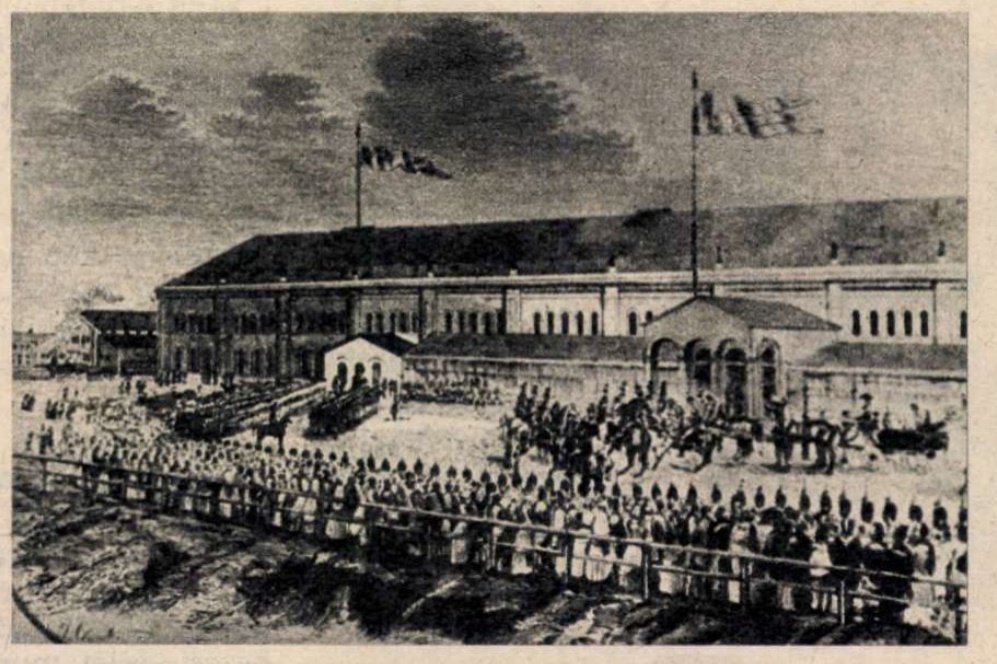 The railway line from Pest to Szolnok was opened 175 years ago
The railway line from Pest to Szolnok was opened 175 years ago
September 2, 2022 at 9:00 AM
In addition to travel from Pest to Vác by rail, it was made possible to reach Szolnok, as the new line was opened 175 years ago. This date is less well-known than 1846, which is known incorrectly as the opening of the first Hungarian railway but "only" the first steam-hauled railway line was opened then. The opening of the Szolnok line on 1 September 1847 was at least as important because of this, Pest's central role in trade strengthened.
By train to Pest and Buda - Until the Compromise, only private railways operated in the country
July 28, 2022 at 9:00 AM
Today, it is natural to get on the train or plane and get anywhere in the world from Budapest. However, it was quite different a century and a half ago. Let's see where someone could travel from Pest or Buda by train 155 years ago, in the year of the Compromise!
The last element of the Southern Connecting Railway Bridge was replaced
May 6, 2022 at 5:30 PM
The third structure of the new connecting railway bridge is now passable, as its last piece has been replaced. The rail and other works will then be carried out and the trial load is expected to take place in early August. This marked another milestone in the development of the Southern Circuit, which aims to increase the utilization of suburban trains, thereby reducing car traffic in the capital.
The connection between Nyugati and Déli Railway Stations was also planned in the 19th century - now it is made underground
February 22, 2022 at 9:00 AM
In recent years, the idea has emerged to connect the Déli and Nyugati Railway Stations with a tunnel. The plan of the Budapest Development Centre is now one step closer to implementation, as a contract has been signed for the preparation of an environmental impact assessment of the connecting railway tunnel to be built under the Danube. The idea of connecting the Déli [Southern] and Nyugati [Western] Railway Stations, which are relatively close to each other, is not a new idea. It arose almost immediately after the opening of the Déli Railway Station in 1861, although an overground connection was still imagined at the time.
The contract has been signed, the railway tunnel under the Danube has taken another step closer to completion
February 17, 2022 at 6:30 PM
The railway tunnel connecting Kelenföld with the Western Railway Station by touching Széll Kálmán Square will be of paramount importance, as it will bring a leap forward development in the agglomeration, within Budapest and connecting the regions. However, the development will have a significant impact on the environment, which is why an environmental impact assessment study needs to be carried out, the contract for which has just been signed. In addition to surveying the soil, caves and springs, the study will also cover whether or not the dust and noise exposure of the population will increase.
The railway can once again become an important means of transport in Budapest
December 31, 2021 at 6:30 PM
The government has adopted the Budapest Agglomeration Railway Strategy, which aims to continuously improve public transport in the agglomeration by 2040. Part of this is the construction of, among other things, the northern and southern border bridges and the railway tunnel connecting Kelenföld, South and West railway stations, making the more than 100-year-old plan a reality.
The first horse-drawn railway of Pest started 155 years ago
August 1, 2021 at 9:30 AM
On 1 August 1866, the regular services of the city horse-drawn railway started in Pest. The first route led from today's Kálvin Square to Újpest, the journey time was 35 minutes. The new means of transport advocated by Count Sándor Károlyi was successful, and the horse-drawn railway contributed significantly to the development of Újpest. A few years after the handover of the first track, Pest and Buda were almost enmeshed by horse-drawn railway tracks.
Next year, the construction of the new Museum of Transport the area of the Északi Járműjavító may begin
July 15, 2021 at 5:30 PM
The Északi Járműjavító (Northern Locomotive Workshop) on Kőbányai Road is saying goodbye with a special temporary exhibition: the building can be seen in its current condition until October, and the exhibition will show not only the life of the former workshop, but also the plans of the new Museum of Transport. The new cultural district, centered on the museum and the existing Eiffel Workshop, will be transformed from the locomotive workshop that closed in 2009. The area will also be connected to Népliget and a new railway station is planned.
A train pulled out of Budapest's first railway station 175 years ago
July 15, 2021 at 9:00 AM
The first station building ('indóház') in Pest was handed over on 15 July 1846, from where the first Hungarian steam-powered train to Vác, which was the first section of the railway line to Vienna, left. With rail transport, the central role of Pest has been strengthened within the country and it set a significant development in motion. So much so that by the 1870s, rail traffic had outgrown Pest's first railway station.
Construction of passenger centre in Keleti Railway Station begins
March 29, 2021 at 3:00 PM
The construction of the passenger centre in the 137-year-old Keleti Railway Station, which serves nearly 11 million passengers a year, has begun. The development will greatly increase passenger comfort, bring international and domestic ticket sales into the same hall, while new escalators and lifts will make the centre easily accessible.
Visuals for the renovation of the old Kelenföld railway station published
February 13, 2021 at 3:00 PM
The Museum of Transport has published visuals of the planned conversion of the Budapest-Kelenföld railway station. The dilapidated station building closed in 2019. The Museum of Science, Technology and Transport will create a new exhibition space about the history of the railway in the building, which will also house temporary exhibitions. In a government decree on Tuesday, the renovation of the building was classified a priority investment.
City of the Future – Railway development connects new areas to city centre
February 8, 2021 at 11:00 AM
What will Budapest look like in 20 years? According to current urban development efforts, the air will be much cleaner, the underground, suburban railways and rail services will be connected. Commuters will happily board clean, on-time and frequent trains to get to work from the outer parts of Budapest and towns in the agglomeration. Sixteen new railway stations will be built to support this purpose, while huge areas once used by the railway may be rehabilitated and handed over for residential use. At least this is what the newly completed Budapest Agglomeration Railway Strategy says.
Construction of passenger centre in Keleti railway station begins
January 15, 2021 at 3:00 PM
The passenger centre's construction in the 137-year-old Keleti Railway Station, which serves 11 million passengers each year, is set to begin. The station's underpass section will be completely redesigned, and passenger access to the station will be easier with new escalators and lifts. The project will increase passenger comfort and is expected to be completed towards the end of this year.
A train to the imperial city – Budapest–Vienna train line opened in 1850
December 20, 2020 at 9:00 AM
1850 was a dark year for Hungary. After the war of independence was lost, so was freedom. Haynau's reign of terror through thousands into prison. But in 1850 a dream came true. A rail connection was completed between Pest and Vienna reached.
More articles
 The „intertwined history” of the bridges and the city of Budapest
Which ideas and events have shaped the fate of bridges of Budapest and the cityscape? Alongside many other interesting facts, this question is also answered this newly published book by the Budapest City Archives, which introduces the history of bridges in Budapest.
The „intertwined history” of the bridges and the city of Budapest
Which ideas and events have shaped the fate of bridges of Budapest and the cityscape? Alongside many other interesting facts, this question is also answered this newly published book by the Budapest City Archives, which introduces the history of bridges in Budapest.
 The Bridge Report, which brought a turning point in the history of Budapest
A travel report that changed the history of Pest and Buda, as well as Hungary. The little book contributed to the change of half a thousand years of legal customs and the implementation of an investment of unprecedented size and technical quality. This book was The Bridge Report [Hídjelentés in Hungarian].
The Bridge Report, which brought a turning point in the history of Budapest
A travel report that changed the history of Pest and Buda, as well as Hungary. The little book contributed to the change of half a thousand years of legal customs and the implementation of an investment of unprecedented size and technical quality. This book was The Bridge Report [Hídjelentés in Hungarian].
 Drama on the university wall - The heroic monument was planned 95 years ago
In the constant hustle and bustle of the Egyetem Square in Pest, the students may not even notice the monument that decorates the short section of wall between the church and the central building of ELTE. However, it commemorates their predecessors, the heroes who fought for their country in World War I, and those who heroically helped them. The first design of the dramatically collapsing soldier was born in 1928, ninety-five years ago.
Drama on the university wall - The heroic monument was planned 95 years ago
In the constant hustle and bustle of the Egyetem Square in Pest, the students may not even notice the monument that decorates the short section of wall between the church and the central building of ELTE. However, it commemorates their predecessors, the heroes who fought for their country in World War I, and those who heroically helped them. The first design of the dramatically collapsing soldier was born in 1928, ninety-five years ago.

